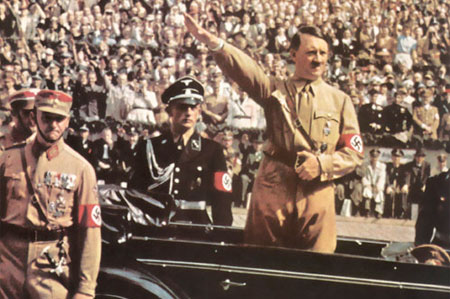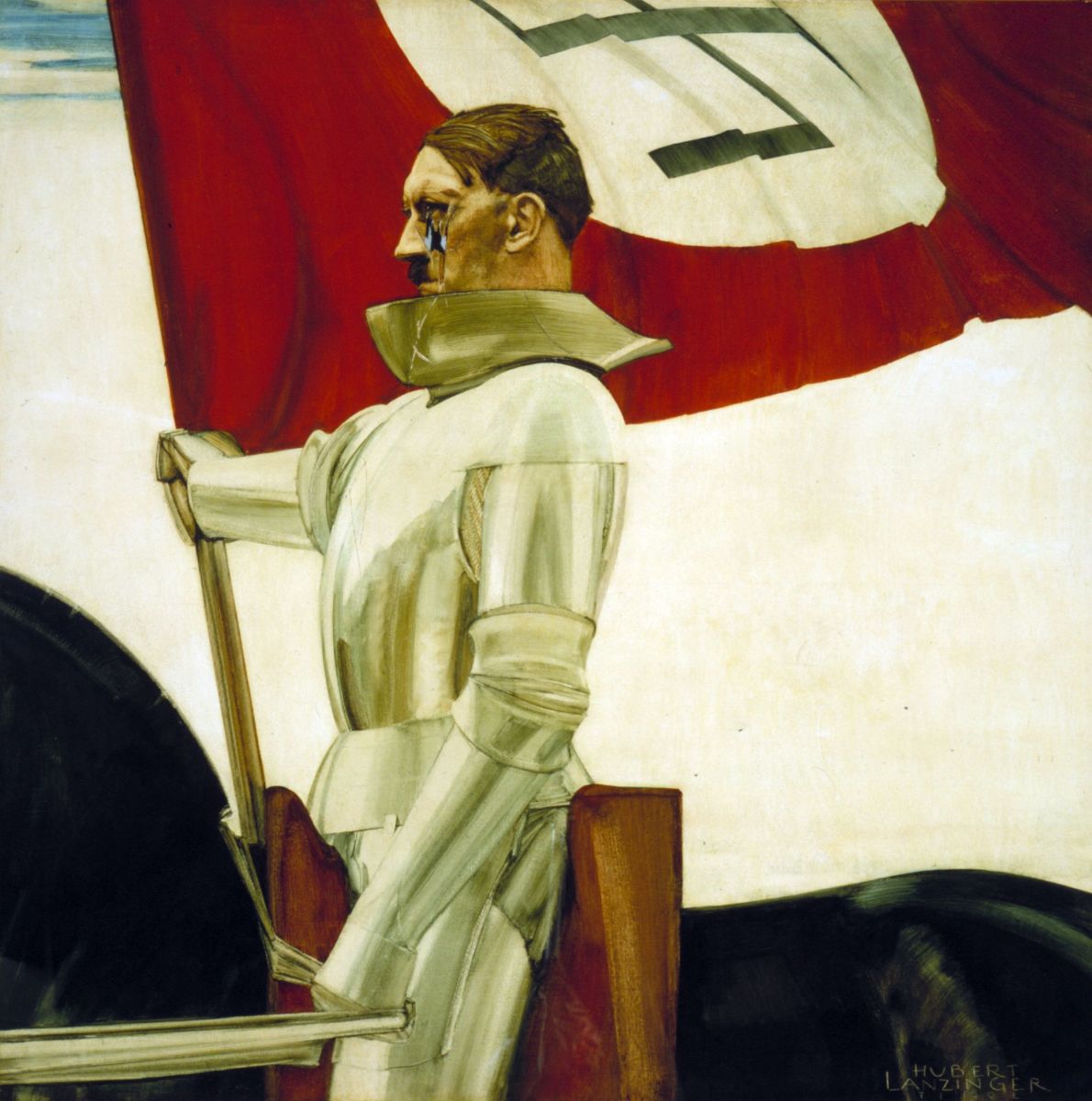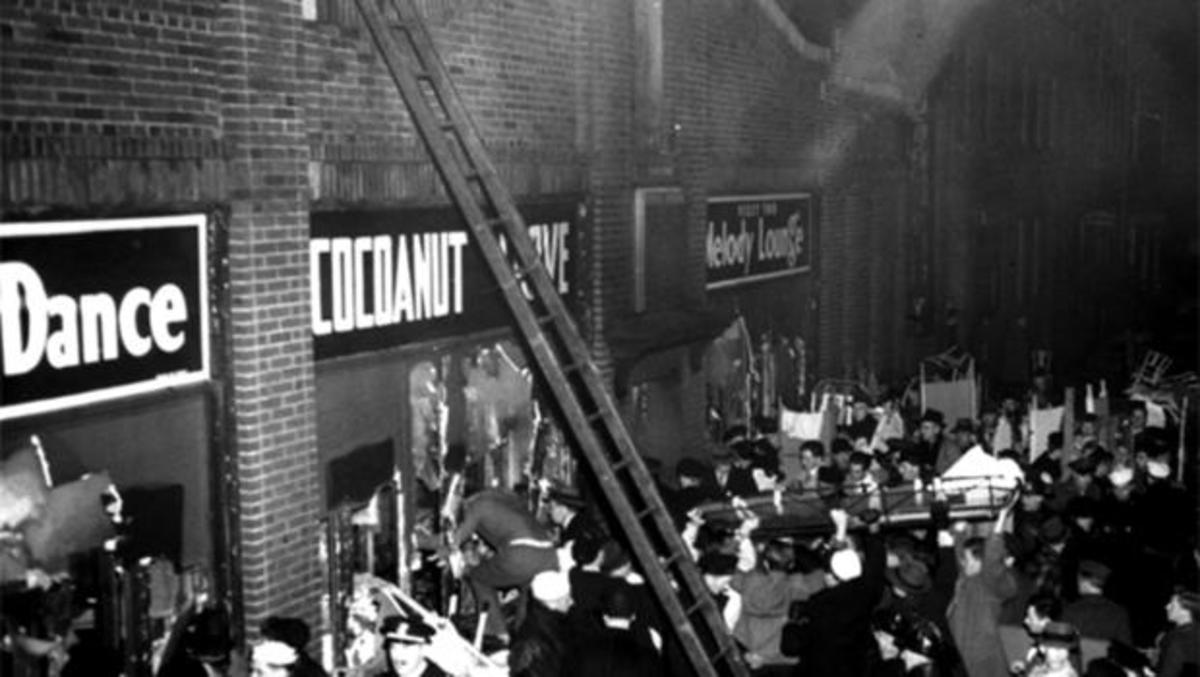How Hitler Gained Acceptance From German Citizens

Do you think Hitler deserves credit for being persuasive speaker?
When one hears the word “evil”, Adolf Hitler is usually the first face that comes to mind. However, if he was so wicked, how was he able to get the people of Germany to back him? The answer lies within his manipulation of the people through persuasion in his engaging speeches and strategic propaganda techniques. Hitler was quite aware of his skills as well. He was once quoted as saying, “I am conscious that I have no equal in the art of swaying the masses,” according to Herman Rauschning, a Nazi politician. (Dufner 66) Adolf Hitler’s statement may have been accurate back when he claimed it and, quite possibly, remains applicable today.
Hitler was also very aware of the situations that surrounded him. In the early 1920’s, Hitler used the failures of Germany’s preceding government, the Weimar democracy, to his advantage in order to win over the people of Germany. When the Nazi Party took over, he and other officials of the Nazi regime made it point to appeal to the issues that their citizens were feeling at the time. According to Frank McDonough’s Hitler and the Rise of the Nazi Party, “Nazism built its support by tapping into the negative feelings…towards such things as the ‘harsh’ terms of the Versailles treaty, high inflation, the instability of democratic government, the economic position of Jews in a German society and the growth of a vibrant communist movement.” (51) While this approach was not uncommon for politicians and is still tactically used currently by various parties, Hitler had an uncanny ability to tap into his listeners’ emotions through his sincere excitement and provide them a vision of a promising future in a time of despair.
Adolf Hitler’s pride and character put him in prime position to attempt to take on the role of resurrecting a disorganized country. Dr. Joseph Goebbels, one of Hitler’s closest accomplices, referred to Hitler’s oratorical skills as having “the ability to express things so clearly, logically and directly that listeners are convinced that that is what they have always thought themselves. (http://www.calvin.edu/academic/cas/gpa/ahspeak.htm) While some Germans may have had similar thoughts before Hitler preached his visions, many of the German citizens were just in search of some sort of leadership. Hitler took little time to illustrate to his people what an idealistic Germany and world should look like.
Hitler always attempted to stay consistent with his message of national unity, as he knew that without the German citizens’ support his mission would be a complete failure. However, in reality, he may have been intentionally creating the opposite of unity, unknown to the people. “Hitler set out to supplant the personal, physical love of a husband with an immaculate love of the Fuhrer…children were to be given an ersatz Father.” (LeBor & Boyes 52) Hitler recognized that without the youth of Germany, the nation’s reign would only last as long as he was alive so he held Hitler Youth rallies and created schools to create strong, courageous children for the future. According to Frank Capra’s Why We Fight, every day these students would sing the following tune:
Adolf Hitler is our savior, our hero
He is the noblest being in the whole wide world
For Hitler we live, for Hitler we die
Our Hitler is our Lord
Who rules a brave new world
(http://www.youtube.com/watch?v=2Q1OKMlhRXQ)
This form of propaganda brainwashed the German youth into not only believing that Hitler was someone to believe in, but also that he was a god worthy of worship. “When Hitler spoke of rescuing Germany, the ‘Aryan nations’ and European civilization…he did not flinch from comparing himself to the Christian savior.” (Wistrich 121) This propaganda was not only limited to the Hitler Youth, however. Many messages were constructed with visual stimulation for the older segments of the population. Hitler created the Swastika logo and Goebbels produced posters that presented slogans such as “Hitler – Germany’s last chance” and “One People, One Nation, One Leader”. (McDonough 73) Both slogans ultimately implied that Hitler was the authoritative figure and the country of Germany would be nothing without him. Ironically (or not so ironically), the message in the propaganda for the adults was not much more complex than that for the children. Adolf Hitler himself claims in his book, Mein Kampf, “All propaganda must be popular and its intellectual level must be adjusted to the most limited intelligence among those it is addressed to. Consequently, the greater the mass it is intended to reach, the lower its purely intellectual level will have to be." (181) In essence, Hitler is claiming that one must try to appeal to the lowest form of intelligence in order to gain acceptance by the overwhelming majority of a population. As a result of his own preaching, he continuously emphasized the same simple themes of unity, loyalty and superiority in both propaganda and his speeches.
These tactics to manipulate the people of Germany through words and images may seem immoral to many because of the final outcome of the Nazi regime and what became of Germany afterward. However, one must keep in mind that during the time of Hitler’s rise and peak unemployment had dropped substantially, furniture shops were reaching record sales, cinemas and theatres were flourishing financially, and marriages were increasing. (LeBor & Boyes 68) Due to this perceived success, the citizens trusted in the Nazi Party and what Hitler advocated. While this accomplishment cannot be solely attributed to Hitler, it is surely not pure irony that the German government and economy began to regain structure after he came into power.
During his orations, sweat often poured from Hitler’s face, breathing became heavy and the volume of his voice fluctuated based on what he wanted to put emphasis on. In fact, as Dufner states, “[people] used the vocabulary of a sexual experience, including such words as ‘climax’, ‘discharge’ and ‘mass orgasm’, to describe the interaction of Hitler and the crowds during his audience.” (67) If one watches his speeches, these seemingly dissimilar activities are actually quite analogous and evident.
For example, in Triumph de Willens, a German propaganda piece produced by Leni Riefenstahl, the progression of Hitler’s speech inarguably gets the crowd to whom he is speaking excited. The beginning of his speech begins with over 10 seconds of silence, leaving the audience in suspense and anticipation. When he begins to speak, his voice almost seduces the crowd with an assuring, yet calm tone. “The Sixth Day of the Movement has come to an end,” Hitler says. As he progresses further, he stresses the fact that the Socialist Party began with only seven members and he hold up seven fingers to the crowd to reemphasize the point. Hitler exclaimed that even at that time “[the party] already voiced two principles. First, it would be a Party with a true ideology and second, it would be uncompromisingly the one and only power in Germany.” It can be presumed that Hitler mentions this to give credibility to the Socialist Party’s beliefs.
Hitler then addresses the insecurity that once existed in Germany, but gives a satisfaction in the same sentence when he says, “the German people are happy to know that a constantly changing vision has been replaced by a fixed pole!” The crowd erupts with a standing ovation and chants “sieg heil!” It is important to note how Hitler tells the German people what they are happy and disappointed with because this utilized tactic of persuasion led to his success as a leader. He continues to give the nation hope for security in the speech by first oversimplifying how to become the most powerful nationality in the world. He claims that “whoever feels that he is the carrier of the best blood and knowingly uses it to attain leadership will never relinquish it.”
As he stiffly swipes his arms through the air and crosses his hands over his heart, his passion becomes visual when he talks about the citizens that are willing to fight for Germany. Hitler makes the powerful declaration, “for them it is not simply enough to make the pledge: ‘I believe.’ Rather, the affirmation: ‘I fight!’” His energy permeates throughout the crowd as they erupt. Essentially what Adolf Hitler implies when he makes that statement and receives the crowd’s reaction is that a German citizen is not nearly as respected if they only believe in the German Reich; they must also be willing to fight for what they believe in as well. Again, Hitler was well aware that without true allegiance in Germany there would be no hope for his dream of an Aryan race. In the same speech, Hitler further emphasized the importance of loyalty to country through loyalty to Party. “It must be shown, however, that all upstanding Germans become National Socialists,” Hitler explains to his listeners. “Only the best National Socialists, however, are Party comrades.” Hitler further backs his speech with happy thoughts for the future, saying that the Reich will last for a thousand years and that the future belongs entirely to the German population.
This speech was targeting mainly German adults, but Hitler knew that he could use parents as a multi-step flow of information to the German youth. In the speech, Hitler indirectly implies the responsibility of the parents to teach their children the “right” way of life. “When the older ones among us falter, the youth will stiffen and remain until their bodies decay,” Hitler exclaims. His use of somewhat perverse imagery and violent body movements also guides his listeners to believe that they are an unwavering, powerful group of people. He ends the speech by shouting “Long live the National Socialist Movement…Long live Germany!”, When Hitler repeats the phrase “long live”, he is essentially implying that the Socialist Movement and Germany are one in the same.
Regardless of an individual’s thoughts of Hitler as a human being, there is no denying his ability to grip an audience through his persuasive words and emphatic actions. It is irrelevant that he manipulated a weak and suffering country, but what is of relevance is that he was successful in obtaining the confidence of the German people through his speeches and make them want to take part in something greater than themselves. It is difficult enough for most people to convince a group of 1000 individuals to truly commit to a particular belief, imagine trying to sway an entire country. Hitler had a substantial amount of success convincing his people and had it not been for extremely frigid weather conditions in Russia in 1941, he might have accomplished his ultimate goal of world domination and an Aryan race.
WORKS CITED:
Dufner, Annette. The Rise of Adolf Hitler. Farmington Hills, MI: Greenhaven, 2003. Print.
Gigliotti, Simone. The Holocaust: A Reader. Malden, MA: Blackwell, 2005. Print.
Goebbels, Joseph. Adolf Hitler. Bilder Aus Dem Leben Des Führers. Hamburg: Cigaretten/Bilderdienst/Hamburg/Bahrenfeld, 1936. Calvin College - Minds In The Making. 1998. Web. 03 May 2011. <http://www.calvin.edu/academic/cas/gpa/ahspeak.htm>.
Harris, Robert. Selling Hitler. New York: Pantheon, 1986. Print.
LeBor, Adam, and Roger Boyes. Seduced by Hitler. Naperville, IL: Source, 2001. Print.
McDonough, Frank. Hitler and the Rise of the Nazi Party. Great Britain: Pearson Education Limited, 2003. Print.
Triumph De Willens. Dir. Leni Riefenstahl. Perf. Adolf Hitler. 1935. YouTube - Broadcast Yourself. 21 Feb. 2009. Web. 03 Apr. 2011. http://www.youtube.com/watch?v=eGhdX1SI3KY.
Why We Fight: "Prelude to War" Dir. Frank Capra. 1943. YouTube - Broadcast Yourself. 26 July 2010. Web. 01 Apr. 2011. http://www.youtube.com/watch?v=2Q1OKMlhRXQ.
Wistrich, Robert S. Hitler and the Holocaust. New York: Modern Library, 2001. Print.








